Emeralds from Colombia
A Treatise to the king of Emeralds
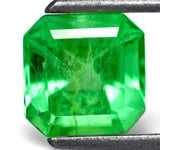 “CANUTILLOS!” Shouted a miner, somewhere deep in the Andes of Colombia, the South American country which has the tribute of being the source of world’s finest Emeralds. He was working for several hours on a vein-shaped crack. He encountered innumerable pockets of “moralla” (uncrystallised green Beryl), little of use to him, but knowing that now success was within reach he continued his digging in hope that his hard work was soon going to gift him with a very sweet reward – Canutillos - the Colombian miners’ name for good quality Emerald crystals.
“CANUTILLOS!” Shouted a miner, somewhere deep in the Andes of Colombia, the South American country which has the tribute of being the source of world’s finest Emeralds. He was working for several hours on a vein-shaped crack. He encountered innumerable pockets of “moralla” (uncrystallised green Beryl), little of use to him, but knowing that now success was within reach he continued his digging in hope that his hard work was soon going to gift him with a very sweet reward – Canutillos - the Colombian miners’ name for good quality Emerald crystals.
The crystals of emerald which are usually of a blue green colour are unfortunately often shattered owing to various geological events. These crystals are sometimes covered by coating of limonitic red iron oxide which needs to be cleaned off by acid in order to see quality of the Emeralds. However, the transparency and quality of Colombian Emeralds far surpasses the quality of Emeralds from any other area.
Lore & History
Centuries back, it was the native Indians who realized something valuable in the Emeralds which they used for barter with the neighboring tribes. Later, when Pizzaro conquered South America and despoiled Peru, he took from the Incas a colossal quantity of Emeralds, many of them of incredible sizes, and sent them to the Queen of Spain. Gradually, the fame of the incredulous green stone spread throughout Europe. The Emerald mines of Colombia are situated in the eastern range of the Andes lying north-east of Bogotá, the Colombian Capital. Emeralds are mined from two locations, the western zone that contains the Penas Blancas, Cosquez, Muzo and Yacopi mining regions and the eastern zone containing the Chivor/Somondoco and Gachala mining regions.
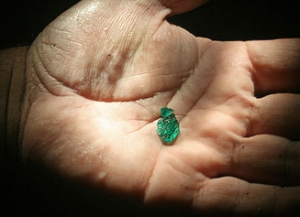
Magnificent Muzo and Cosquez mines
Despite the history surrounding the Chivor mines, the best quality Emeralds are found from the mine at Muzo which, with the mine at Cosquez, 10 km to the north-north-west, is owned by the Empresa Colombina de Minas (Ecominas) of the Colombian government and leased to private enterprises on a ten year lease basis.
The geology of this area is similar to that of Chivor, but the Emerald-bearing veins contain calcite, quartz, dolomite, and pyrites and rub through a black carbonaceous limestone and shale which form the country rock. In contrast to the Zambian Emeralds which are found in hard schist rocks, the mining in the soft shale is easier and hence blasting techniques are not mandatory for the recovery of Emeralds, this is also the reason for the recovery of larger sized, cleaner Emeralds.
Like the Emeralds from Chivor which are famous for the blue green colour, the Muzo Emerald have a yellowish-green colour and have a warm velvety appearance which is highly prized. The gemological properties of Emeralds from Muzo are nearly similar to that of Chivor in terms of specific gravity and refractive index.
The Charismatic Chivor
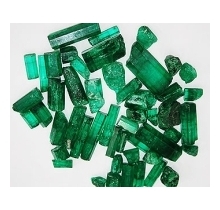 When Gonzalo Jimenez de Quesada conquered Colombia in 1537, the first indication came that the South American country may hold some great Emerald deposits. He was given nine stones by the inhabitants of the town of Guacheta. Although the location of the mines was a well guarded secret by the Indians, a youngster betrayed their trust and gave the whereabouts of the mine at Somondoco, the mines now known best as El Chivor. However, within 100 years the mines were abandoned, the reason may have been the lack of good material or the discovery of finer quality Emeralds at Muzo area, and the mining site gradually covered by vegetation was lost in history.
When Gonzalo Jimenez de Quesada conquered Colombia in 1537, the first indication came that the South American country may hold some great Emerald deposits. He was given nine stones by the inhabitants of the town of Guacheta. Although the location of the mines was a well guarded secret by the Indians, a youngster betrayed their trust and gave the whereabouts of the mine at Somondoco, the mines now known best as El Chivor. However, within 100 years the mines were abandoned, the reason may have been the lack of good material or the discovery of finer quality Emeralds at Muzo area, and the mining site gradually covered by vegetation was lost in history.
In 1896, Don Francisco Restrepo, who merely had a note in his pocket written by a friar on Spanish conquest which said “the mines of Chivor are situated on the point of a ridge from which the Ilanos and Orinoco can be seen”, rediscovered the lost mines. He then formed the Chivor Mining Company which mined for over 20 years but not with much success.
The gemological characteristics of Emeralds from Chivor are unique to it, the Emeralds have a specific gravity of 2.69, and they have a median refractive index of 1.579 with birefringence of 0.005-0.006. They also show a fairly red colour under the Chelsea colour filter due to the presence of Chromium. Although some stones are colored by Vanadium which does not show red under the colour filter, the major coloring element is Chromium. Also the Chivor Emeralds are famous for their three phase inclusions (the co-existence of a solid, liquid and gaseous phase inclusion in the Emerald).
The Rare Trapiche
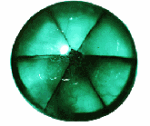 The mention of Colombian Emerald cannot be completed without the mention of the rare Trapiche Emeralds. In 1879, a new type of Emerald crystal was encountered, which to most was astounding. Originating from Colombia, it consists of a central hexagonal prism of green colour from the prism faces of which six prisms of similar colour appear to have grown outwards. The appearance of trapiche Emeralds looks as if a “fixed star” has been drawn in the hexagonal Emerald crystal by nature. The crystals are called ‘Trapiche Emeralds’ from the Spanish word for cane-crushing gears. These Trapiche Emeralds are found both in the Chivor and the Muzo mining areas. In the Muzo area the central core is black whereas in the Emeralds from the Chivor area the central core is green. The trapiche Emeralds have till today been characteristic of only the area of Colombia. More Information on Trapiche Emeralds...
The mention of Colombian Emerald cannot be completed without the mention of the rare Trapiche Emeralds. In 1879, a new type of Emerald crystal was encountered, which to most was astounding. Originating from Colombia, it consists of a central hexagonal prism of green colour from the prism faces of which six prisms of similar colour appear to have grown outwards. The appearance of trapiche Emeralds looks as if a “fixed star” has been drawn in the hexagonal Emerald crystal by nature. The crystals are called ‘Trapiche Emeralds’ from the Spanish word for cane-crushing gears. These Trapiche Emeralds are found both in the Chivor and the Muzo mining areas. In the Muzo area the central core is black whereas in the Emeralds from the Chivor area the central core is green. The trapiche Emeralds have till today been characteristic of only the area of Colombia. More Information on Trapiche Emeralds...

Famous Colombian Emeralds
Of all the fine Colombian Emeralds, the most famous uncut Emerald is an enormous carat crystal called The Devonshire. Other Emeralds are owned by the Bank of Bogotá and are on display. Many of the finer Emeralds have been lost in the hands of avid private collectors due to poor security near the Cosquez mining area.
Green Beryl or Emerald – The Perpetual Question
 Like the many gray areas of gemology, this is one question on which debate has been raging for centuries. What may appear as green emerald to some may be just green beryl for others. Technically, emerald is a mineral of the beryl family which includes aquamarine, heliodor, golden beryl, goshenite etc. If going only by the colour, even the top gemologists of the world can be confused on the nomenclature of Emeralds. Many debate that since the green colour of Emeralds is caused due to the presence of trace impurity of chromium, hence only beryl containing chromium should be termed as emeralds. This definition has changed over the last years wherein a large number of green emeralds have been found which are colored by vanadium and sometimes even iron. Since Colombia is famous for emeralds, even pale green colored stones from this country are termed as emeralds and also as they contain chromium it confirms the nomenclature.
Like the many gray areas of gemology, this is one question on which debate has been raging for centuries. What may appear as green emerald to some may be just green beryl for others. Technically, emerald is a mineral of the beryl family which includes aquamarine, heliodor, golden beryl, goshenite etc. If going only by the colour, even the top gemologists of the world can be confused on the nomenclature of Emeralds. Many debate that since the green colour of Emeralds is caused due to the presence of trace impurity of chromium, hence only beryl containing chromium should be termed as emeralds. This definition has changed over the last years wherein a large number of green emeralds have been found which are colored by vanadium and sometimes even iron. Since Colombia is famous for emeralds, even pale green colored stones from this country are termed as emeralds and also as they contain chromium it confirms the nomenclature.
Colombian Emeralds from our Inventory:
10.59-Carat Lustrous Neon Green Colombian Emerald (Untreated)

2.32-Carat Eye-Catching Heart Shaped Colombian Emerald

75.16-Carat Massive Pear-Shaped Colombian Emerald (Untreated)

1.12-Carat Rare High-Clarity Colombian Emerald (Untreated)

4.11-Carat Magnificent Pair of High-Grade Colombian Emeralds

1.81-Carat Extremely Rare "Velvet Green" Colombian Emerald
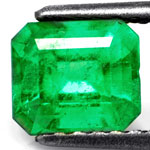
3.42-Carat Unique Half-Moon Cut Colombian Emerald (High Lustre)
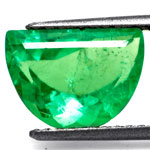
4.77-Carat Pleasing Grass Green Cabochon-Cut Colombian Emerald

0.79-Carat Lustrous Grass Green Colombian Emerald











